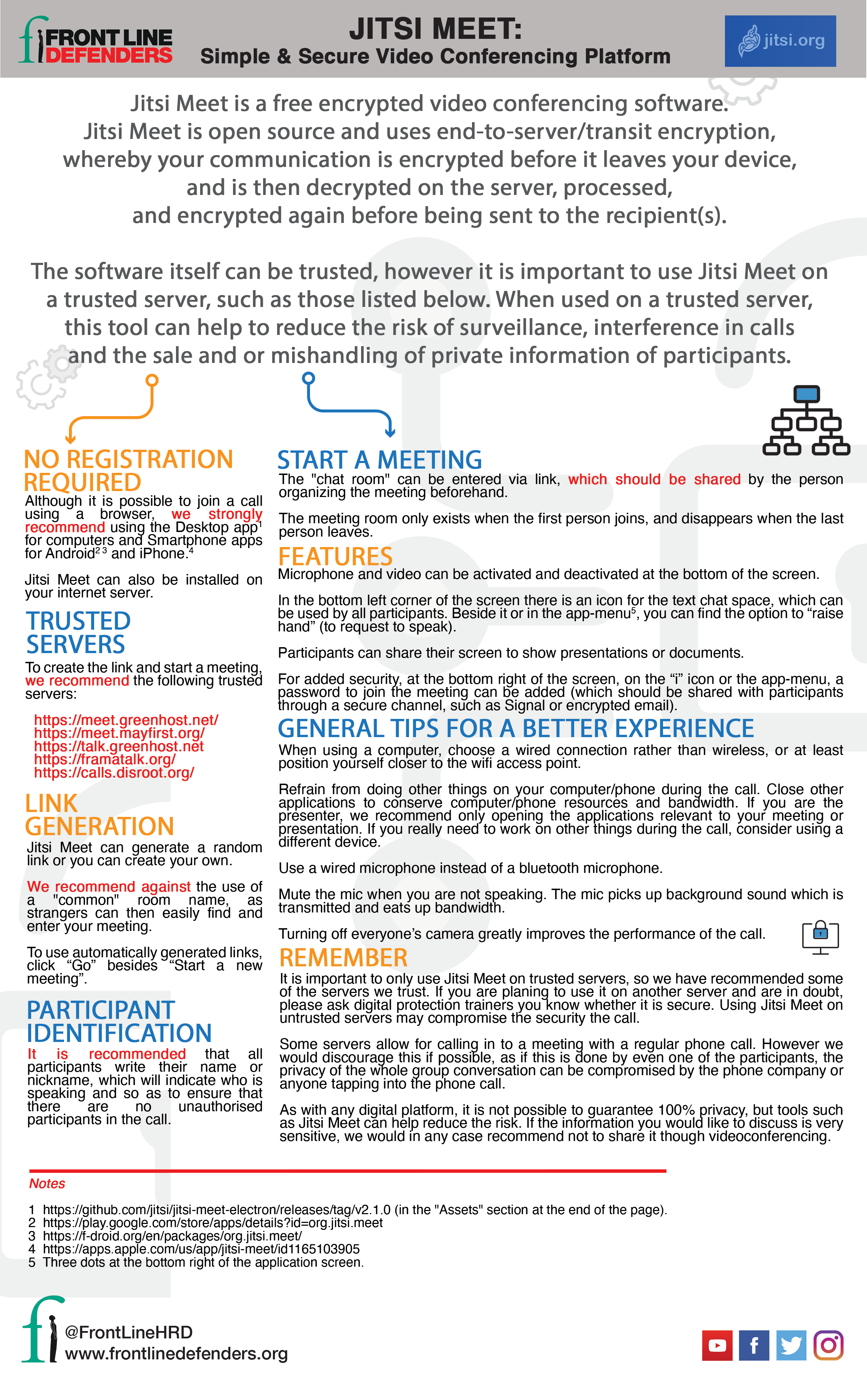

Jitsi (from Bulgarian: жици - «wires») is a collection of free and open-source multiplatform voice (VoIP), video conferencing and instant messaging applications for the web platform, Windows, Linux, macOS, iOS and Android. Voice over IP, instant messaging, videoconferencing Import ).Austrian, English, French, German, Bulgarian, Japanese, Spanish, Italian, Romanian, Greek and 25 more You need to enable JavaScript to run this app.Īt the start of the React application, we initiate the connection with the conference. Index.html has to contain the container for the React application. We will map these into the correct places in the React application.

Index.js - This initiates the Jitsi connection. Index.html - This is the initiation point for the application. Project Structureįirst, we’ll create the project structure. But in this series, we will create a React application with lib-jitsi-meet features. Jitsi Meet application: lib-jitsi-meet with ReactĪn example application of the lib-jitsi-meet is included in the repository. Jitsi developers have already done this but we will create a frontend application that will be more optimized for performance. In this series, we are going to extend the API library for a fully-featured conferencing application. If we focus on the Jitsi architecture this project is just the component named ‘jitsi meet’. This is an npm project that can be easily started. Using this we can replicate all the features of the Jitsi Meet application. The lib-jitsi-meet interface is a frontend API to create Jitsi Meet conferences with a custom GUI. This is an architectural diagram from the Jitsi developers’ website to understand how a set of modules work together to create the system.

Jitsi Videobridge - Routes video streams amongst the conference participants.Jitsi Meet - Javascript application created using React to provide video conferencing.Jitsi application comprises a set of modules. Jitsi can also be depicted as a collection of modules that are easy to use and dependant on each other to make up a total Jitsi system. Jitsi is an open-source project that provides top-level video conferencing capabilities. We will take a look into Jitsi Meet in this series. Following are a few brand names that dominate the domain as paid/limited applicationsįollowing are some open source projects that are video conferencing solutions. There are many applications that provide video conferencing and they range from paid solutions to open source solutions. Any webRTC application will have some basic features like accessing the media devices, opening peer connections, keeping connections alive, and streaming media. There are many applications for WebRTC, including basic chat applications to complex video conferencing applications. The WebRTC project is open source and supported by Apple, Google, Microsoft, and Mozilla, amongst others. Various clients have their own APIs to access webRTC features. This technology is available on almost every platform including all modern browsers and native clients. It supports video, voice, and generic data to be sent between peers. Developed by Google, WebRTC allows the users to do real-time communication with web applications that work on top of an open standard. WebRTC is the most popular and widely used solution of all for implementing real-time communication applications. There is a huge competition between the conferencing tool vendors such that different tools offer different capabilities. There are both proprietary and open-source tools available for video conferencing. Video conferencing is practiced in remote communications and also with the pandemic conditions many organizations started to use video conferencing tools for day-to-day tasks. It also promotes productivity, time management, reduced travel expenses, communication skills, and better collaboration. Video conferencing allows people to meet and collaborate face to face long-distance by transmitting audio, video, text, and sometimes other content in real-time through the internet. Video conferencing is a live video-based meeting between two or more people in different locations using video-enabled devices.


 0 kommentar(er)
0 kommentar(er)
